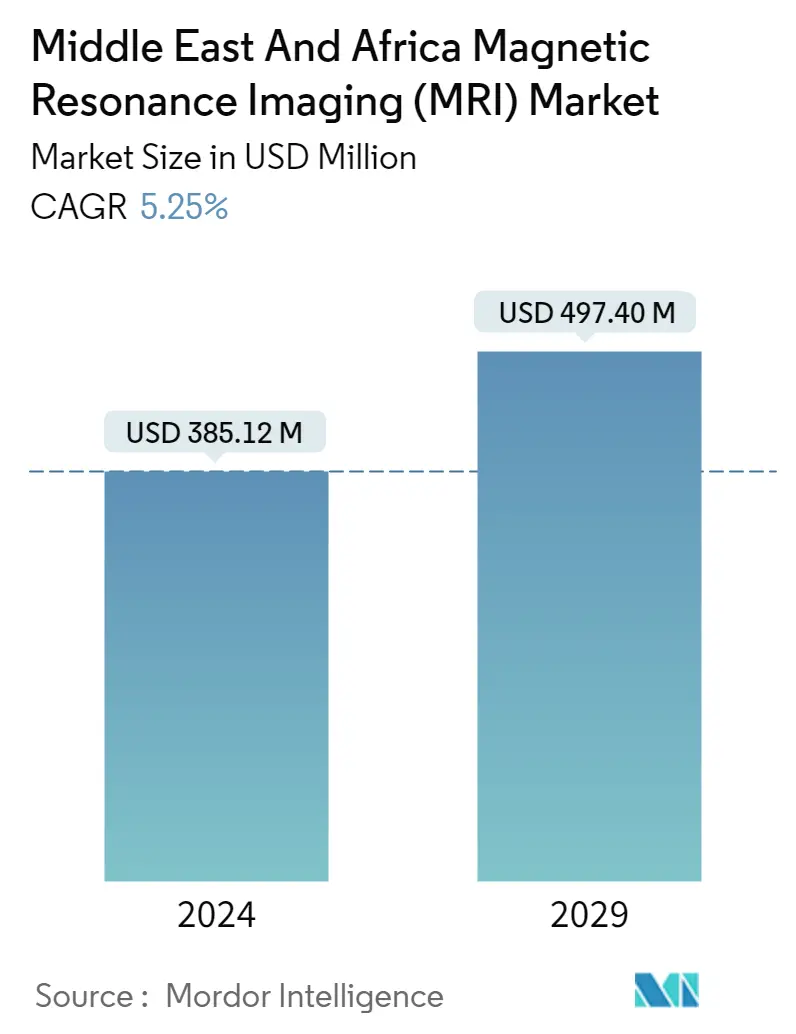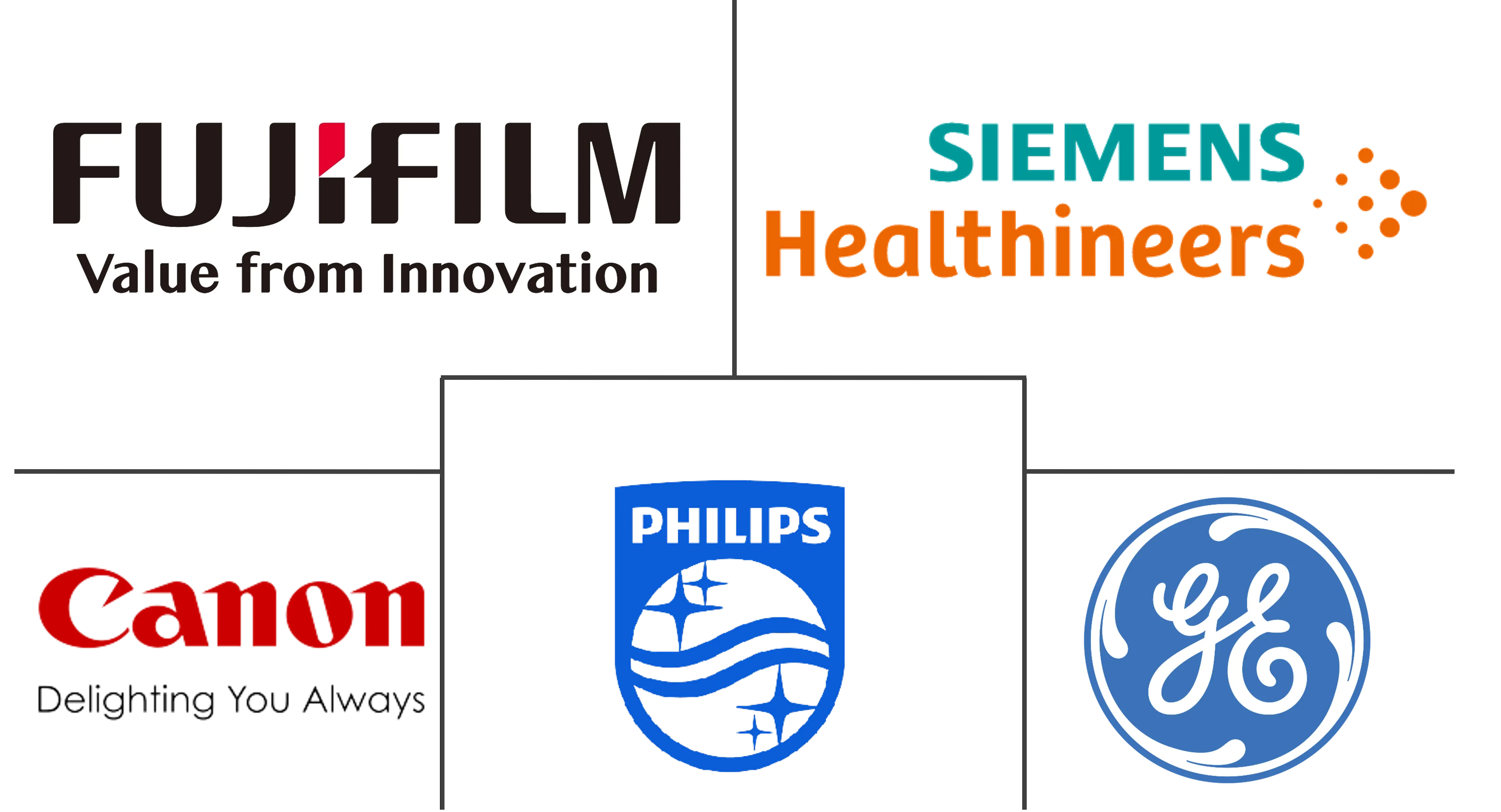Market Size of Middle East And Africa Magnetic Resonance Imaging (MRI) Industry

| Study Period | 2019 - 2029 |
| Base Year For Estimation | 2023 |
| Market Size (2024) | USD 385.12 Million |
| Market Size (2029) | USD 497.40 Million |
| CAGR (2024 - 2029) | 5.25 % |
| Market Concentration | Low |
Major Players
*Disclaimer: Major Players sorted in no particular order |
Need a report that reflects how COVID-19 has impacted this market and its growth?
Middle East and Africa MRI Market Analysis
The Middle East And Africa Magnetic Resonance Imaging Market size is estimated at USD 385.12 million in 2024, and is expected to reach USD 497.40 million by 2029, growing at a CAGR of 5.25% during the forecast period (2024-2029).
The COVID-19 pandemic is an unprecedented health concern and has significantly impacted the magnetic resonance imaging market in the Middle East & African region. During the first wave of COVID-19 in the Middle East & Africa region, there was a significant reduction in total diagnostic imaging services. The effect of pulmonary tuberculosis (TB) and human immunodeficiency virus (HIV) infection on the clinical course and radiologic characteristics of COVID-19 pneumonia was unknown, according to RSNA International Trends: "A Global Perspective on the COVID-19 Pandemic and Radiology in Late 2020". According to preliminary research, contemporary tuberculosis and human immunodeficiency virus are both separately linked to a rise in COVID-19-related mortality. Lockdowns result in a 70% reduction in elective outpatient services and a 40% reduction in the overall imaging workload. This made the already lengthy wait times for advanced imaging services like MRI and CT much longer. International Finance Corporation 2021 claims that a lot of healthcare professionals in Africa are unable to afford sophisticated medical equipment. Equipment shortages, such as MRI machines and CT scanners, affect African nations. As a result, patients involving post-covid problems required the appropriate diagnostic equipment, including an MRI. Hence, the region may see an increase in demand for MRI.
The rising technological advancement, such as the inclusion of MRI with PET or CT, to provide imaging possibilities with less exposure to harmful radiations is boosting the market growth in the region. The global players, such as GE Healthcare, Siemens, and Philips, have an extensive hold on improving technology, as well as distribution channels in the region. By 2050, the number of people with dementia was expected to have nearly tripled to more than 152 million, according to statistics presented at the Alzheimer's Association International Conference in 2021. The Middle East, North Africa, and Eastern Sub-Saharan Africa are predicted to experience the largest increases in prevalence. Therefore, one of the key factors influencing Alzheimer's disease and related research is the increased incidence of dementia. This is anticipated to fuel the development of very high field MRI scanners in the area, which will fuel the expansion of this market in the Middle East & Africa. Additionally, according to a study published in Frontiers in Neurology in March 2021 titled "Dominant and Modifiable Risk Factors for Dementia in Sub-Saharan Africa (SSA): A Systematic Review and Meta-Analysis," the annual incidence of clinically diagnosed dementia in SSA was estimated to be 2%, with a prevalence of 5%. The most significant modifiable factor in the current study was low educational attainment, while older age was the most significant risk factor for dementia. As a result, the market growth is anticipated to be further fueled by the increasing frequency of dementia with a clinical diagnosis, as the research calls for very high field MRI scanners. Thus, the abovementioned factors are expected to increase market growth.
However, the high cost of MRI is expected to hinder market growth.
